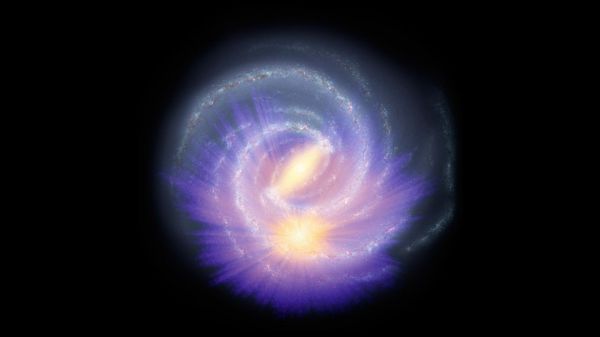The first direct measurement of the bar-shaped collection of stars at the centre of our Milky Way galaxy has been made by combining data from the Gaia mission (European Space Agency, ESA) with complementary observations by ground- and space-based telescopes. The study, published in Astronomy & Astrophysics, was led by researchers from the Institute of Science Cosmos of the University of Barcelona and from the Leibniz Institute for Astrophysics Potsdam (Germany).
The second release of data from Gaia star-mapping satellite, published in 2018, has been revolutionising many fields of astronomy. The unprecedented catalogue contains the brightness, positions, distance indicators and motions across the sky for more than one billion stars in our Milky Way galaxy, along with information about other celestial bodies.
This is just the beginning. While the second release is based on the first twenty-two months of Gaia’s surveys, the satellite has been scanning the sky for five years, and will keep doing so at least until 2022. New data releases planned in coming years will steadily improve measurements as well as provide extra information that will enable us to chart our home galaxy and delve into its history like never before.
Read more at: University of Barcelona
This colour chart, superimposed on an artistic representation of the galaxy, shows the distribution of 150 million stars in the Milky Way probed using data from the second release of ESA's Gaia mission in combination with infrared and optical surveys, with orange/yellow hues indicating greater density of stars. Most of these stars are red giants. While the majority of charted stars are located closer to the Sun (the larger orange/yellow blob in the lower part of the image), a large and elongated feature populated by many stars is also visible in the central region of the galaxy: this is the first geometric indication of the galactic bar. The distances to the stars shown in this chart, along with their surface temperature and extinction - a measure of how much dust there is between us and the stars - were estimated using the StarHorse computer code. (Photo Credit: ESA/Gaia/DPAC, A. Khalatyan(AIP) & StarHorse team; Galaxy map: NASA/JPL-Caltech/R. Hurt (SSC/Caltech)


